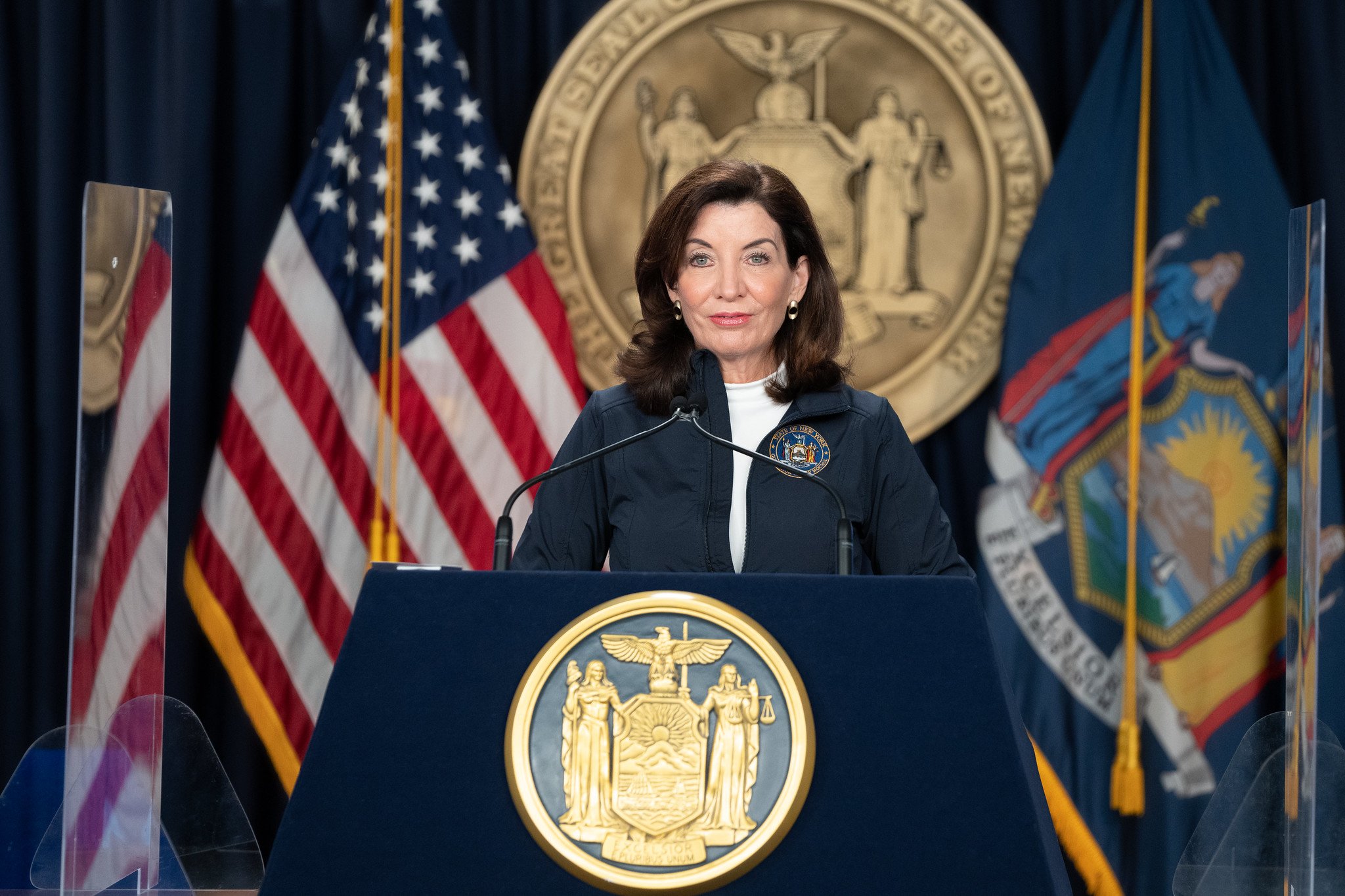By David Brand
The careers of 46 older judges are in limbo amid a court battle over an Office of Court Administration decision to deny them new terms.
So too are the tens of thousands of cases they handle,.
The 38 supreme court justices facing termination have approximately 21,000 cases on their combined dockets, according to the Supreme Court Justices Association of the State of New York, which has sued state court leaders to block dismissal of the judges. Eight others justices sit on the appellate bench, where they rule on hundreds of cases a year.
There are not enough newly elected justices to absorb that massive caseload, with courts already strained by COVID-19, said Queens Civil Supreme Court Justice Carmen Velasquez, president-elect of the Supreme Court Justices Association.
“I’m glad we have the new judges, and we were hoping the new judges can help us with the backlog, but now we have a double backlog,” she said.
Her organization’s lawsuit accuses the OCA Administrative Board of age discrimination for targeting the older judges. Under state law, judges are required to apply for recertification and undergo cognitive exams every two years after turning 70 until they reach a mandatory retirement age of 76. Before this year, the recertifications were a formality except in rare cases.
OCA says letting go of the judges will save $55 million during a state-imposed judicial budget crunch and prevent the layoffs of other court staffers. The judges’ cases will be dispersed among existing and incoming judges, OCA said.
Velasquez said she was “cautiously optimistic” after a Suffolk County judge temporarily sided with her organization and blocked OCA from following through with their plan to deny certification to the judges over 70. OCA and the Supreme Court Justices Association will be back in court Dec. 29.
“We are just hopeful that everyone has the courage to do the right thing,” Velasquez said. “Doing the right thing means allowing these justices to continue.”
Other judges are less hopeful about the outcome.
“It’s not that they can’t be reinstated, but I don’t see any positive coming out of” the court challenge, said one judge familiar with many of the jurists facing termination. The judge asked to remain anonymous to talk openly about OCA, their colleagues and the litigation.
OCA has appealed the Suffolk County judge’s decision to the Third Department, Appellate Division — potentially moving the matter closer to the Court of Appeals, New York’s highest court. Chief Judge Janet DiFiore, head of OCA Administrative Board, leads the Court of Appeals and would almost certainly recuse herself from the case, leaving it up to the remaining six associate justices.
“Judges have tried to sue in the past and the Court of Appeals was never friendly to them,” the judge who talked with the Eagle said, citing past battles for pay raises a decade ago. “They got smacked down.”
Further complicating a potential appeal: An amicus brief submitted to the Appellate Division Third Department by previous chief judges and chief administrative judges.
In their brief filed Monday, New York’s former top judges Jonathan Lippman and Sol Wachtler, and former chief administrative judges Ann Pfau, E. Leo Milonas, and Joseph Bellacosa said OCA’s Administrative Board “exercised its obligation and discretion to make a difficult policy choice in order to best serve the public,” in essence reinforcing OCA’s main argument. The brief also says ruling against OCA’s decision threatens the constitutional powers of the Administrative Board.
But several judges facing termination, as well as their colleagues, legal leaders and good government groups have consistently questioned how removing the judges serves the public.
“I think the best interest of the public is to have a full complement of judges so that the court system can continue. It’s very hard now to get your case heard and less 46 experienced judges will be even harder,” said attorney Steven Cohn, past president of the Brooklyn Bar Association.
Eight appellate judges are also facing termination, further straining an understaffed judiciary handling thousands of cases a year. The Second Department, which includes Queens and Brooklyn, was already short judges and will now lose four more — three denied recertification and one, Presiding Judge Alan Scheinkman, who is retiring.
“This will have a tremendous impact on the Second Department,” Cohn said. “It’s devastating.”
The appeals are typically a defendant’s last chance for a favorable ruling because few cases make it to the Court of Appeals after appellate judges weigh in.
Thus, each case requires careful reading, and a firm grasp of many fields of law, said Justice Sheri Roman, who sits in the Second Department Appellate Division.
The role forces judges to understand all kinds of cases, from “commercial to zoning to maritime to matrimonial,” Roman said. “I had one case where I had to figure out how someone could get a divorce in India in the 1950s.”
Roman has joined other appellate judges on a related lawsuit filed in Suffolk County to reverse the decision to terminate older judges.
OCA spokesperson said the Suffolk County judge’s decisions have flimsy legal standing.
“We remain on this farcical merry go round of orders being issued by the trial level justice only to be automatically stayed by the appellate division based on our pending appeal,” Chalfen said.
“At some point the continued frosting of a nonexistent cake will end and the case will be decided on the merits.”
Whatever happens in the Suffolk County court, the appellate division or even the Court of Appeals, Velasquez said her judges’ association is committed to seeing the case through all the way to the U.S. Supreme Court if necessary.
“We understand that the budget crisis is really hard, and hopefully the stimulus coming to the state will help out,” she said. “It’s hard but sometimes you have to step up to the plate.”


















